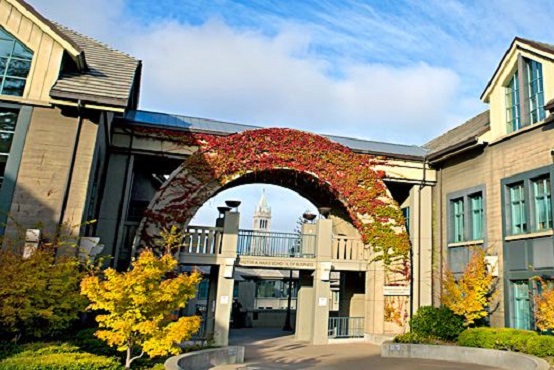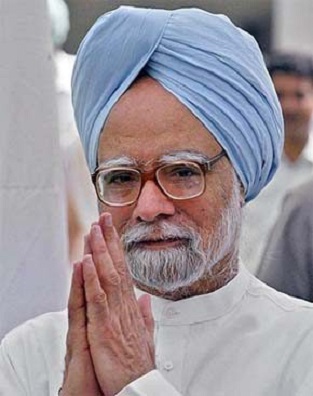‘Armed Conflict Resolution and People’s Rights’ housed at Haas School of Business, University of Berkeley, California aims to study internal armed conflicts and mass violence around the world and the impact they have on people’s rights.
 What is hugely curious is its choice of India as a case study.
What is hugely curious is its choice of India as a case study.
The project does not claim to study all the culprits in a conflict. It only purports to study the ‘cruelties of the State power’ and how it is ‘misused’ against the armed ‘combatants’. Therefore, all the atrocities committed by terrorist insurgencies in the world are automatically excluded from its purview.
From around the world, it has taken only South Asia as its concerned cultural area of focus; and in South Asia, only India is taken as a case study. One wonders why a project which aims to study ‘human rights violations by the State’ and ‘mass violence’ would pass over dozens of conflicted countries in the world where State violence is extreme and zero in on India as a case study.
But first, to put things into perspective: The Project is the initiative of an American University situated in California. It could have chosen to study armed conflict in its near vicinity, such as Latin America, one of the most volatile regions in the world considering State vs. insurgent violence.
But it does not do that. It declares its intentions to be ‘global’.
There are more than two dozen active armed conflicts going on in the world right now, the most violent of them being in Nigeria, Libya, Egypt, Turkey, Syria, Iraq, Yemen, Saudi Arabia etc. These are extremely disturbed countries where human suffering has reached a pinnacle it has rarely reached before. Every party in these conflicts, including the State, is guilty of the grossest human rights violations. And some of these countries are democracies.
The Project could have chosen to study any of the armed conflicts going on in any of these countries. But it does not do that. It chooses South Asia as the region to focus in the case of human rights abuses.
South Asia has its fair share of State cruelty and human rights violations going on against the minorities. A genocide of minorities is going on in Pakistan with Hindus reduced to around one per cent of its population. Intolerance against any kind of minority is increasing by the day and now, as the other minorities have all but disappeared, the Shia Muslims are the primary target of religious violence and State neglect and cruelty.
Bangladesh has been systematically cleansing its religious minorities since its independence from Pakistan. From around 33% of the population in 1940s, the Hindus of Bangladesh are now reduced to just about 8%.
The Project could have chosen any of these South Asian countries as a case study. But it does not do that.
To repeat, the one country that the Project takes up as a case study is India, the largest democracy in the world, the most stable country in the region, politically, socially and economically. India is one of the most lenient states in the region. Yet, India is the target of the Armed Conflict Resolution and People’s Rights project.
Why?
If we dig just beneath the surface, India is not a random or an arbitrary choice. It is also not a natural choice for a Project with the aims stated by the ACRPR. India is carefully, deliberately targeted because of the hidden agendas of those running the Project.
The Relationship between Business Schools and Non-Profit Ventures
Before going deeper into the report and the people involved in the Armed Conflict Resolution and People’s Rights Project, it would be illuminating to study its relationship with non-profit ventures.
The Project is housed at the Center for Social Sector Leadership in Haas School of Business. What does ‘social sector leadership’ mean? The Center’s web page elaborates:
“The Center for Social Sector Leadership is defining a new generation of business leaders, a generation that understands and values the crucial role that nonprofit and public institutions play in the world’s increasingly collaborative economy.”
One wonders, why a School of Business would be interested in nonprofit institutions? Are they treating them as potential business opportunities? Nonprofit and public institutions, by definition, function outside the realm of traditional economy as they are considered to be welfare activities. They are called ‘non-profit’ for a reason.
The only reason a business school would be interested in nonprofit ventures is to turn them into profit opportunities—profit not merely in the sense of “monetary profit.”
The fact that The Armed Conflict Resolution and People’s Rights Project comes under the Center for Social Sector Leadership confirms that the Project is not just a philanthropic venture but has ulterior motives.
Philanthropic Venture Capitalism
Social Sector Leadership is similar to ‘philanthropic venture capitalism’, which is an activity of big corporate giants that want to earn profits even from philanthropic ventures.
Hence, many philanthropic ventures that are sponsored by corporate money are part of ‘philanthropic venture capitalism’ in which big investment firms invest money in philanthropic ventures. In return, these ventures function as corporate lobbyists and public-opinion makers which aid the monetary, political and other causes of corporate giants.
In the past few years, these ‘philanthropic investment firms’ have started investing in journalism and academia to start influencing the public at the very source: schools, colleges and universities so that by the time an individual has attained spendable income and a vote, he or she is already molded into the dominant ideology that the influential corporate groups want him/her to follow.
In a similar move, business schools, mainly in the U.S, have also started turning their gaze towards nonprofit and philanthropic activities. As public pressure and media attention forces governments to pass CSR laws forcing the corporate sector to dedicate a certain percentage of its income to philanthropic activities, a new sector has risen up altogether which teaches how to turn this compulsory, untaxed philanthropic activity into something profitable, in one way or the other.
Deceptive Terminology
The Haas School of Business has many such ventures and collaborative projects which specialize in manipulating nonprofit and social work for corporate and political purposes. Many of these activities are aimed at intervening and politically destabilizing countries like India. But it shrouds its activities in euphemistic terminology designed to confuse and throw off an unsuspecting onlooker.
Hence, there is a ‘Philanthropy University’ which trains business students for philanthropy but with implications in economy and industry. Then there is ‘The Social Impact Collective’ which:
“…leverages the world-class educational assets of UC Berkeley, and other leading institutions and organizations to guide members in their journey to have social impact through philanthropy and impact investing.”
Business students are guided to ‘social impact’ through ‘philanthropy’ and ‘impact investing’.
Social impact is understood as bringing revolutionary change in society, mainly Third World societies which are radically different from the West in matters of society, economy, religion and polity. These ‘beneficiary societies’ are understood to be lacking in basic ‘international standards’, according to various international UN agencies.
Just like ‘white man’s burden’, it is considered the responsibility of the First World citizens, particularly those involved in the corporate sector to ‘bring positive change’ in these Third World societies; change which will make these societies more like their Western counterparts; more receptive to products designed for western markets. This is euphemistically called ‘social impact’.
Investment in these ‘philanthropic activities’ for bringing ‘positive social impact’ in society is termed ‘impact investing’. This is the manner in which the business machinery of the biggest corporate giants in the U.S. and the West is geared up in the Third World countries so that it can earn profit and explore new markets in the name of ‘philanthropic work’.
Haas School of Business has a separate fund which pays salaries to the students who work on projects like Armed Conflict Resolution and People’s Rights Project. “These grants allow students to put their Haas MBA to use for organizations that are doing important work in communities around the world but cannot offer to pay a ‘typical’ MBA salary.”
A Business School is not supposed to spare any resources for something which it considers a profitable venture.
Hence manipulation of non-profit projects for business and political purposes is called ‘social sector leadership’. Destabilizing Third World societies through disruptive change is known as ‘social impact’. Massive channeling of corporate and political resources for intervening in the internal matters of Third World countries is known as ‘impact investing’.
Business and management schools in the U.S. and Europe are experts at creating terminology, which couches interventionist policies of the Western governments in terms which make it sound like benevolent charity.
The constitution and principles of UN Human Rights Watch and similar agencies are cited as the standards by which Third World countries are judged. War-like conditions are portrayed in peaceful democracies like India by selective and exaggerated reports on certain hand-picked incidents and then interventions are made in the name of restoring ‘human rights of the oppressed individuals’.
In short, this is nothing but colonialism in a new avatar. The continued intervention of the Western governments in the internal affairs of Third World countries like India is guaranteed by these philanthropic activities, which are seeded in the hearts of Western universities and are funded by corporate giants.
Why India?
So why is India a specific target? Most of the Islamic countries are dictatorships, whose dictators are either preparing for a war against the United States and the West or are in their pocket. China is a communist country with no tolerance for democratic scruples like human rights.
That leaves India as the biggest hunting ground for such ventures. It is an emerging market with a huge and diverse population. It has a vast non-Christian, non-Muslim population as its majority. Its democratic set-up makes it easy for the interventionist groups in the West to meddle in its affairs, citing human rights violations.
In short, it is an easy target for missionaries of every kind.
 There is one feature which is common in the approach of every such project. These interventionists hate a strong government because a strong government creates hurdles in their plans. They root for weak, indecisive and pliant governments: in India’s case, the evidence is in the form of the dangerous subversion of government and state institutions that occurred in the decade-long rule of the weak Prime Minister, Manmohan Singh.
There is one feature which is common in the approach of every such project. These interventionists hate a strong government because a strong government creates hurdles in their plans. They root for weak, indecisive and pliant governments: in India’s case, the evidence is in the form of the dangerous subversion of government and state institutions that occurred in the decade-long rule of the weak Prime Minister, Manmohan Singh.
In addition to powerful countries in the West, the insurgents, the secessionists and the foreign groups also like weak governments.
Understandably, the ACRPR Project vehemently opposes the BJP and the Narendra Modi Government, while scarcely blaming the Congress Party and the UPA regimes.
As the upcoming parts of this series will show, there is enough material to suspect that the ACRPR Project is designed to destabilize the Modi government and create chaotic, war-like situation in India by instigating communal riots in the country.
Pankaj Saxena is a scholar of History, Hindu Architecture and Literature. He has visited more than 400 sites of ancient Hindu temples and has photographed the evidence. He’s also writes articles, research papers and reviews in various print and online newspapers and magazines and is the author of three books.

